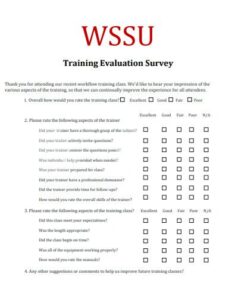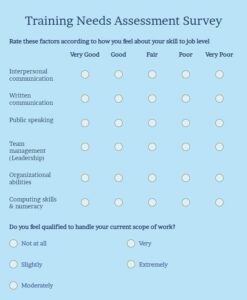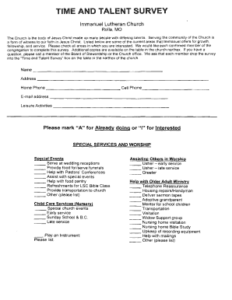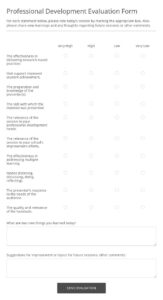Understanding where your team stands in terms of skills, aspirations, and challenges is absolutely critical for fostering a thriving work environment. It is not enough to simply offer training; you need to offer the *right* training. This is where a well-designed professional development needs survey template becomes an invaluable tool, providing direct insights into what your employees genuinely need to grow and succeed. It’s about being proactive and strategic, rather than just guessing.
By systematically gathering feedback, organizations can move beyond generic training programs and tailor development initiatives that truly resonate with individual and collective goals. This approach not only boosts employee engagement and retention but also directly contributes to the overall success and adaptability of the company. It’s an investment in your most valuable asset: your people.
What Makes an Effective Professional Development Needs Survey Template?
Creating a survey that genuinely uncovers development needs requires more than just a list of questions. It demands careful thought about what information is most useful and how to phrase questions to encourage honest and comprehensive responses. An effective template acts as a compass, guiding both employees and management towards a shared understanding of growth opportunities. It should be easy to navigate for the respondents while providing actionable data for the organizers.
The best templates strike a balance between quantitative data, such as rating skill levels, and qualitative insights, allowing employees to express their thoughts in their own words. This blend ensures you get both the broad strokes and the finer details of their development landscape. Think about what specific skills are becoming more relevant in your industry or what emerging technologies might impact future roles within your organization.
Key Elements to Include
- Current Skill Assessment: Ask employees to rate their proficiency in various job-related skills. This helps identify individual and departmental strengths and weaknesses.
- Desired Skill Development: Inquire about what new skills or knowledge employees wish to acquire. This often reveals their career aspirations and areas where they feel a personal need for growth.
- Preferred Learning Methods: Understanding how employees prefer to learn (e.g., online courses, workshops, mentoring, on-the-job training) helps in designing appealing and effective programs.
- Career Goals and Aspirations: Encourage employees to articulate their short-term and long-term career goals within the organization. This aligns individual ambition with company direction.
- Obstacles to Development: Identify any barriers preventing employees from pursuing professional development, such as time constraints, cost, or lack of opportunities.
- Feedback on Past Training: Gather insights on the effectiveness and relevance of previous development programs offered by the organization.
Crucially, an effective professional development needs survey template should also include opportunities for open-ended feedback. This allows employees to share nuanced perspectives, suggest topics not covered by the predefined questions, and express any concerns or innovative ideas they might have. Such qualitative data is often where the most insightful and unexpected findings emerge, providing a richer context for the quantitative results.
Designing and Implementing Your Professional Development Needs Survey
Once you have a solid understanding of the components of a great survey, the next step is putting it into practice. Designing the survey involves choosing the right platform, crafting clear and concise language, and ensuring the survey is accessible to everyone. The goal is to make the process as straightforward as possible for employees, minimizing survey fatigue while maximizing valuable input. Consider using anonymous responses to encourage greater honesty and openness.
When it comes to implementation, timing is everything. Launching the survey at a point when employees are not overwhelmed with other tasks will increase participation rates. Communicate the purpose of the survey clearly: explain how their feedback will be used and emphasize the positive impact it will have on their growth and the company’s future. Transparency builds trust and encourages more thoughtful responses.
After the survey closes, the real work of analysis begins. Don’t just collect data; interpret it. Look for patterns, common themes, and significant outliers. Are there particular skills that many employees want to develop? Are there certain learning methods that are overwhelmingly preferred? This analysis should inform the design of your new or revised professional development programs. Remember, the survey is a diagnostic tool, not an end in itself.
Finally, ensure you close the loop by communicating the results and the actions you plan to take based on the feedback. Even if you cannot address every single request immediately, showing employees that their input was heard and valued is essential. This fosters a culture of continuous improvement and demonstrates your commitment to their professional growth, making future survey initiatives even more successful. It establishes an ongoing dialogue rather than a one-time data collection effort.
Investing time in creating and utilizing a comprehensive professional development needs survey template is more than just good HR practice; it’s a strategic move for any forward-thinking organization. It empowers employees by giving them a voice in their own growth journey, directly leading to a more skilled, engaged, and productive workforce.
Ultimately, by systematically understanding and addressing the unique developmental aspirations of your team, you’re not just offering training programs; you’re cultivating a robust learning culture. This commitment to continuous improvement for your employees will inevitably translate into sustained innovation and competitive advantage for your entire organization.



